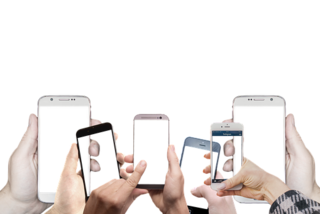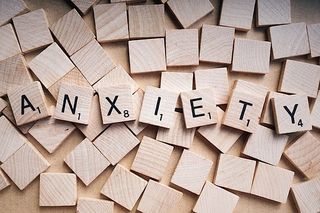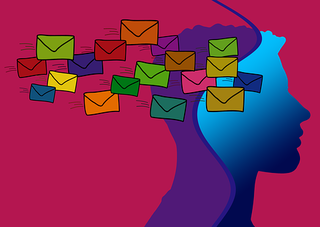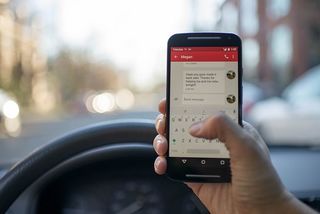Sleep
Confessions of a Smartphone Junkie
Protecting our “humanware” by changing our smartphone behavior
Posted November 22, 2017

I AM A SMARTPHONE JUNKIE. I am not embarrassed by this since nearly everyone I see in my world appears to think that what is contained in the little box in their purse or pocket is more important that what is right in front of their face if they just lift their eyes once in a while. Sadly, that seems to be too difficult for most.
Until recently, I got a lot of pleasure out of reading most of my email and nearly always found myself reaching for the phone the instant it vibrated with an incoming message. My front screen has icons for various social media accounts, multiple messaging systems and other ways I connect with the world. In addition, there are icons for news services, movies, and sports all crowded together on the first screen that I see when I unlock my phone. Alerts from each prompt a visceral reaction with my heart skipping a beat instantly as it rings or vibrates.

A study by my colleague Dr. Nancy Cheever found that not being able to answer a text message causes a bodily anxiety reaction. In a 60 Minutes segment she demonstrated this with Anderson Cooper and on a Good Morning America story she showed the same with the T. J. Holmes and an even larger anxiety reaction—4 or more times stronger—with two teenage girls. Recently I have come to the conclusion that this bodily reaction is not good for me and I am working to keep myself healthy without having to stop using my iPhone. Below I will share some of the little changes that I am making. First a little background.
My problematic behavior began to simmer as my first iPhone (circa 2007) presented me with myriad ways to notify me that something “important” had arrived. I would unlock my phone and find little red circles with white numbers telling me how many emails awaited or how many text messages had arrived. As I added each social media site icon to the front page I gleefully allowed notifications to display those numbers on the icon AND to email me at the same time. At the same time I added vibrations and sound to each. Over a period of about 5 years my phone was beeping and buzzing all day (and night) and driving my family and me crazy although at the time I had no idea what it was doing to me as well as how it was impacting my relationships. Watching TV news I would often grab my phone within seconds after it alerted me to an incoming missive. Most of the time it would sit on my chest while lying in bed watching TV to make that grab even more quickly.
I should know better! I have written 7 books on the impact of technology but it was not until co-writing my most recent book, The Distracted Mind: Ancient Brains in a High-Tech World, with Dr. Adam Gazzaley, an eminent neuroscientist, that I became concerned about what this constant bombardment of potentially anxiety-provoking alerts and notifications might be doing to my brain and overall body health.
For the past three years, I have been making changes. The first change I made came from research that I published with Dr. Mark Carrier and several students in our lab titled, “Sleeping With Technology” where we showed that both executive functioning problems and anxiety/dependence on technology—some call it FOMO—predicted sleep problems both directly and by promoting more tech use which, in turn, predicted sleep problems. We found that half of our tested college students sleep with their phones within arm’s reach and half awaken and check their phone one or more times for something other than the time. One-third of the participants got less than the National Sleep Foundation recommended minimum of 7 hours of nightly sleep and another third got the bare minimum.
Why is this bad for us to sleep with our phones? The National Sleep Foundation and the Mayo Clinic have weighed in on this and place some of the blame on the emissions of blue wavelength light from the LEDs in most of our devices which serves to slow down the production of melatonin, which puts us naturally to sleep, and starts the release of cortisol which aims to wake us up. This only happens if the device is close to your face and on full brightness and the Mayo Clinic recommends keeping our devices 14 inches from our face and turning down the brightness close to bedtime. The National Sleep Foundation recommends no active LED-based technology use in the last hour before sleep. So now I turn my phone on silent an hour or more before retiring but I am still not able to move it out of the bedroom and allow it to act as my alarm clock. I am part way there but have miles to go before I sleep. My nightly sleep starts earlier now and lasts longer and I feel better in the morning and don’t need as much caffeine to get rolling.
By the way, iPhones have an app called Night Shift that automatically changes your lighted screen from more blue light during the day into more pink light at night, which helps the release of melatonin. Android-based phones can download the f.lux app that will do the same.
I am also dealing with handling my email more mindfully. I get a couple hundred emails a day and the phone was beeping all the time so I turned off the beep but left the vibration (tough to cut it off cold turkey). But now I am practicing not reacting like Pavlov’s dogs and checking it immediately. This morning as I was reading the paper (yes, I still read a real newspaper) it vibrated and I totally forgot about it for an hour or so. Baby steps, baby steps.

I also realized that I was getting tons of email from people and organizations that I did not really care about one whit. As those emails arrive I search the bottom for the unsubscribe link and have so far unsubscribed to about 40 email lists and am adding at least one a day. Ones I can’t unsubscribe from I send to junk. I also have created some macros to automatically send certain emails to a folder called “When I Have Time.” I haven’t looked at that folder in at least a month so I guess nothing was critical. When I was growing up (before voicemail and answer machines) and we missed a phone call my mom would say, “If it’s important they will call back.” None of the people or organizations sending me emails that get shuttled to that folder has emailed back. Must not have been important.
For social media, I turned off all notifications and got rid of the little numbers. I check when I have time, which turns out to be way less than I did when I was constantly notified. I also scanned my phone and got rid of any apps that I did not want or need or use. I know I can get them back easily but I honestly don’t miss them. Apps with similar functions have been put into folders to hide them from my prying eyes when I don’t really need to use them. At the end of the night I flip all apps away and am still amazed at how many I am using daily. I will deal with that another day.
I am also working diligently to denote “technology free zones” in my life when just the mere presence of technology can be distracting (see an interesting phenomenon called the iPhone Effect) and lead to disrupted communications, less empathy, and fewer feelings of connectedness to the person with whom you are talking. Tech-free zones can (and should) include the dinner table, restaurant tables, television watching with family members and even when you are in the car. These places are all golden opportunities to connect on a personal level and we are sorely lacking face-to-face interpersonal relationships in this age of smartphone immersion. Relationships are more satisfying when phones are gone and eye contact is on the other person’s face and not down at your phone.
Research has also shown that certain behaviors are helpful in reducing the overwhelmed brain that arises from constant bombardment of multiple screens, communications over social media, texts, emails, and, of course, those cute cat videos that lead you down an infinite road of other cute animal videos. In our book, The Distracted Mind: Ancient Brains in a High-Tech World, Adam Gazzaley and I explore, in the final two chapters, ways to calm and reset your distracted mind. Just 10-15 minutes of exercise, mindful meditation, nature walks, and more options calm the distracted mind. I suggest doing these ever 90 to 120 minutes of immersive technology use. Tech breaks every 15-30 minutes relieve the anxiety (FOMO) of not checking in as often as you would like. Checking your email on a schedule rather than whenever it beeps at you is another solid suggestion but you have to turn off push email notifications to make this work otherwise you will still act like Pavlov’s dogs and figuratively salivate when your phone signals a new email. There are many more strategies in the book that will help calm a distracted mind.

In California, it is against the law to text while driving and you are not allowed to hold your phone in your hand at all. Any calls must be done with a phone mounted on the dashboard or windshield and handsfree through voice activation. And contrary to an increasingly typical behavior you are not allowed to use your phone when you are stopped at a red light. I admit that I have always put my phone in my lap or in the cup holder while I drove and checked it voraciously at a red light until the driver behind me honked a horn. That has been a difficult adjustment but I am learning how to just let my mind wander a bit at stoplights rather than checking my phone. I now keep it in my pocket when I drive making it more difficult to quickly grab and check.
Finally, I have become more judicious about answering my phone. If I don’t recognize the number I let it go to voicemail and many times forget about it until I see that little, red circle with the white number. Most of the time the calls are junk and I end up blocking that number immediately.
I figure I am about halfway to simplifying my smartphone life without losing my smartphone access. I still carry it with me all day and if I pat my pocket and it is not there I do feel a visceral reaction. I still get phantom pocket vibrations even when I know my phone is on the desk next to me and not in my pocket. I don’t think I will be happy not having it on me at all times but reaching for it less often ought to make me a lot healthier and happier. At least it will make my family happier and for that they are grateful.
References
Rosen, L. D., Carrier, L. M., Miller, A., Rokkum, J., & Ruiz, A. (2016). Sleeping With Technology: Cognitive, Affective and Technology Usage Predictors of Sleep Problems Among College Students. Sleep Health: Journal of the National Sleep Foundation, 2, 49-56.




